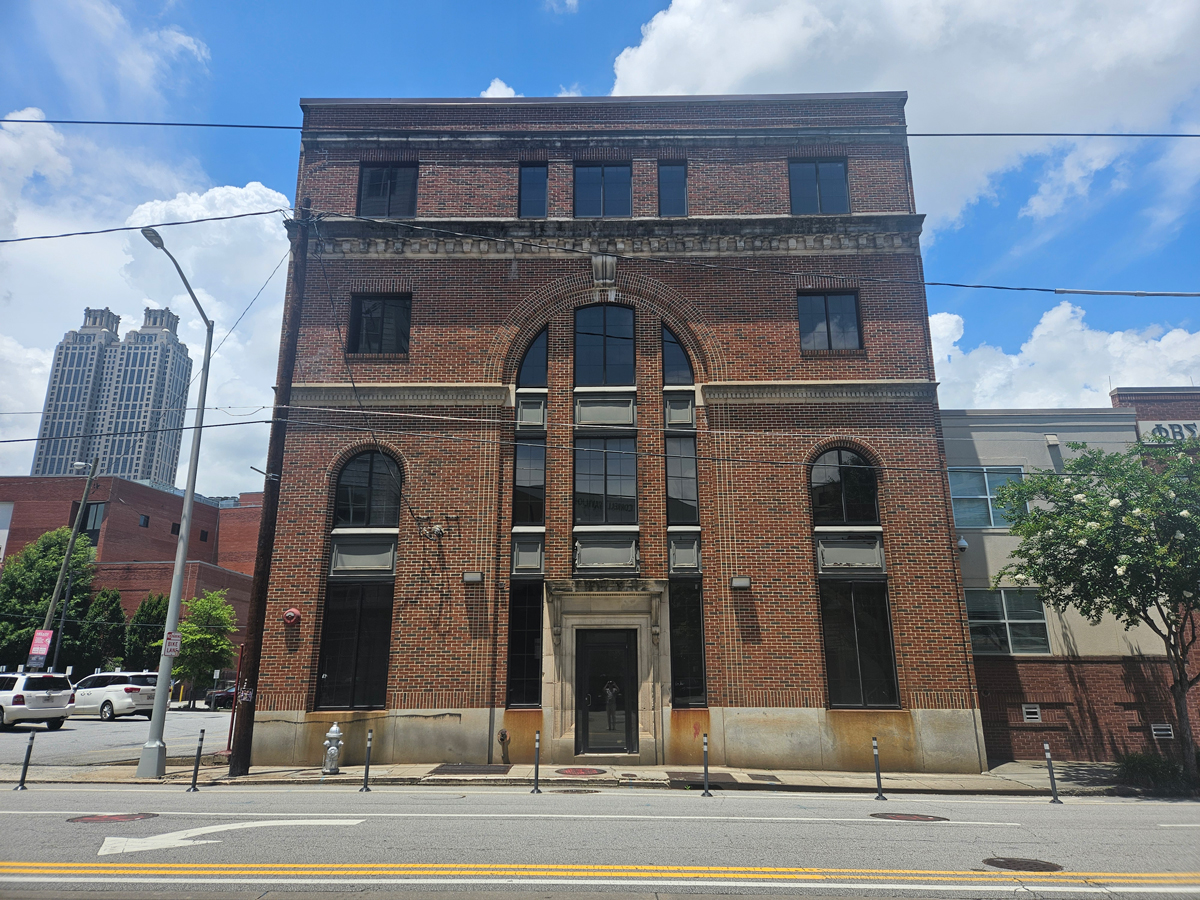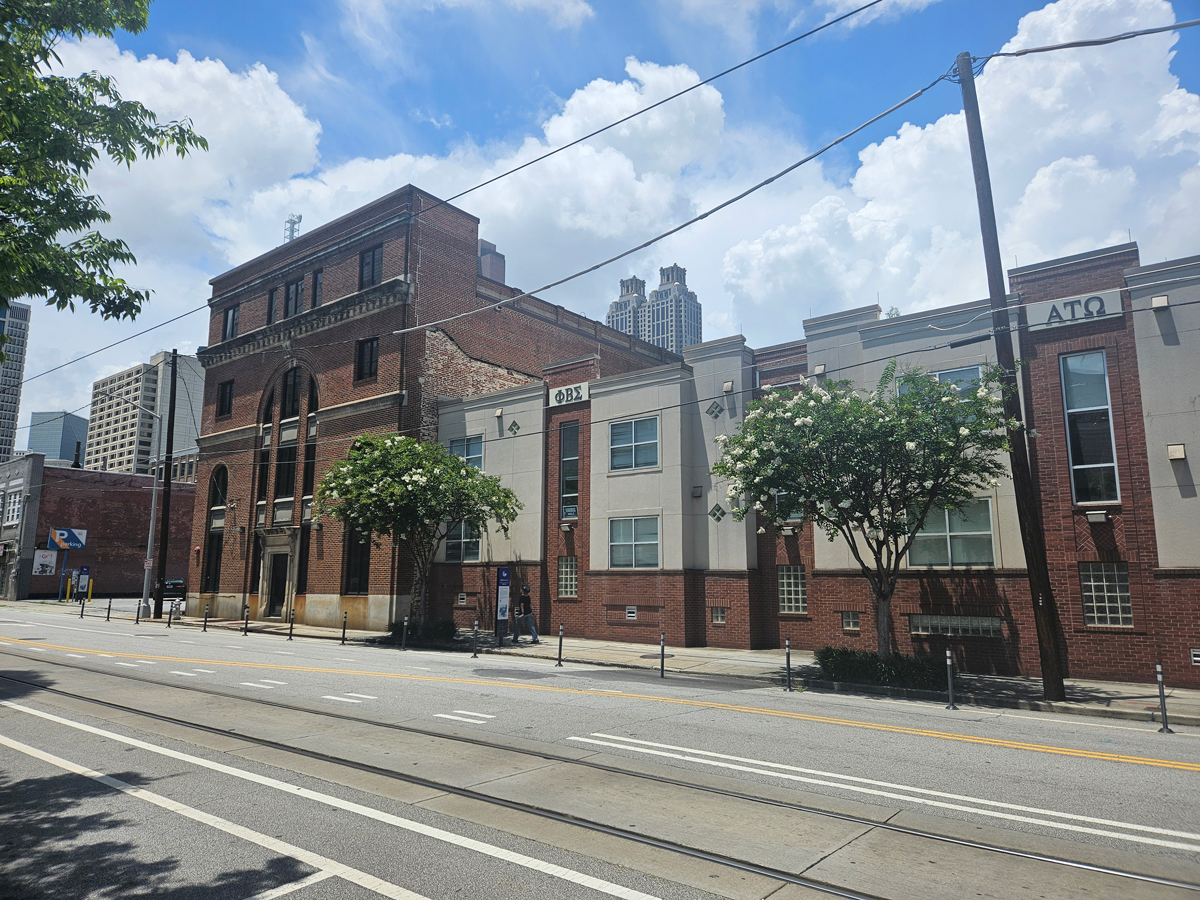
Photograph by Sean Keenan
Since 1913, Georgia State University has been embedded in the heart of Atlanta—its campus stitched into downtown’s streetscape. Now, GSU wants to reimagine that patchwork as a true “college town.”
A small army of intown historians and activists finds a part of that plan problematic.
The university’s overarching mission: make Georgia State’s central campus more walkable, welcoming, and, most importantly, safer. The $100-plus million plan—expected to be complete before 2026’s FIFA World Cup—calls to raze the Sparks Hall classroom building and close off part of Gilmer Street to make way for the 15-acre “Panther Quad,” expanding GSU’s new Greenway corridor that weaves through downtown’s grid system. It would also retrofit some aging buildings to produce state-of-the-art classrooms.
But blueprints for open, pedestrian-friendly spaces also call for the demolition of a century-old building at 148 Edgewood Avenue. Its destruction, approved by Governor Brian Kemp, would free up space for a pint-sized park for the school’s fraternities and sororities.

Rendering courtesy of Georgia State
Don’t you dare, says the vociferous opposition movement composed of historic preservationists, community groups, neighbors, and Liliana Bakhtiari, the Atlanta City Councilmember who represents the district. Many of the same voices stopped the wrecking ball from taking Georgia State’s old Bell Building—it’s soon to reopen as the home of the National Institute for Student Success—and they think they can do it again.
Leveling the circa-1916 structure—which housed the Georgia Railway and Power Company long before the one-time streetcar operator evolved into the statewide utility Georgia Power—would be an affront to Martin Luther King Jr.’s legacy, opponents say; they argue it would throw a middle finger at a national historic district bearing the late civil rights icon’s name that’s already watched roughly half its buildings vanish over the years in the pursuit of economic development.
“This building would be another victim to the lack of foresight and of understanding the unique value an urban campus can provide,” David Mitchell, the head of the nonprofit Atlanta Preservation Center, said in an interview. “It is something that has survived in the last 100 years of Atlanta, a city that has evolved dramatically. It’s been a witness to the entire experience of 20th Century Atlanta.”
Chad Keller, the director of GSU’s Heritage Preservation Program added: “While nothing of particular historical note happened at 148 Edgewood, it does have historical value as it relates to its design, craftsmanship, and construction.”
LeJuano Varnell, executive director of historic preservation and community revitalization nonprofit Sweet Auburn Works, echoed those concerns in a September 2024 letter to GSU President Brian Blake, reminding the school’s chief executive that the institution had once advocated 148 Edgewood’s preservation and renovation.
Efforts to protect the building have spanned decades, including its inclusion in state and national historic districts in 1989 and 1992, school preservation plans from as recent as 2021, and a 2024 state determination that demolition would “have a ‘significant impact on historic properties,” Varnell wrote.
Indeed, the State of Georgia’s historic-preservation arm last year told Terracon Consultants, GSU’s contractor for the redevelopment, that razing 148 Edgewood could hurt neighboring properties’ eligibility for state and federal protections.
“The demolition of an individually eligible property and unknown new construction that is potentially incompatible with historic properties in the project’s [area of potential impact] is not consistent with the State of Georgia’s Standards for the Treatment of Historic Properties,” Jennifer Flood, a deputy state historic preservation officer, said in an email obtained by Atlanta.

Photograph by Sean Keenan
Still, Georgia State believes replacing the old building with a Greek-life greenspace won’t just make the school more attractive to prospective students; it will curb crime and, as GSU chief operating officer L. Jared Abramson put it, “unsavory behaviors.”
“Being in downtown Atlanta offers our students so many amazing opportunities for experiential learning and networking and career placement—the major benefits of being in an urban environment,” he told Atlanta. “But the unsavory behaviors, the smells and situations that our community members can be confronted with downtown can certainly present challenges and distractions.”
Students, Abramson said, made “loud and clear” that they want a “more walkable campus” and “an environment where they can feel safe.” There’s “safety in numbers,” he reasoned—something fostered best by creating new gathering spaces, like the one planned for 148 Edgewood.
What’s more, Abramson added, it would be prohibitively expensive to retrofit the old building for university uses—some $12 million to open up less than 9,000 square feet for students. Plus, he said, GSU already has a solid track record of fixing up and using old structures; just look at the Bell Building.
Kameron Wells, a recent Georgia State grad and member of a historically Black fraternity, backs the Greek-life park project. During a heated public meeting last month at Centennial Hall—a university building a block away from 148 Edgewood—he reminded attendees that “MLK was a member of Alpha Phi Alpha Fraternity, Inc. Is that not honoring his legacy, building something so monumental like this?”
“We want a place to showcase our culture,” Wells said. “This is going to attract more students to want to come to Georgia State, so why wouldn’t we do that?”
Well, maybe do it elsewhere, suggested Keller, GSU’s top historic preservation expert.
“There are enough vacant lots around campus that tearing down a historic building shouldn’t be necessary,” he said. “GSU can do both, and it shouldn’t be an either-or.”
Advertisement




